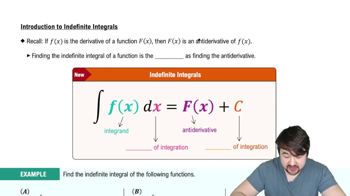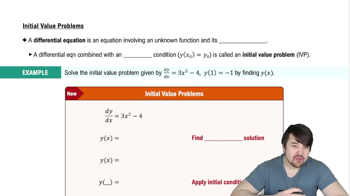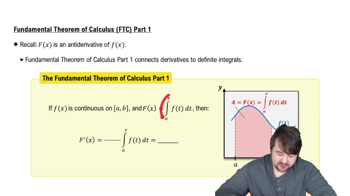Finding Functions from Derivatives
In Exercises 31–36, find all possible functions with the given derivative.
a. y' = 1 / 2√x
 Verified step by step guidance
Verified step by step guidance Verified video answer for a similar problem:
Verified video answer for a similar problem:



 5:53m
5:53mMaster Finding Differentials with a bite sized video explanation from Patrick
Start learning